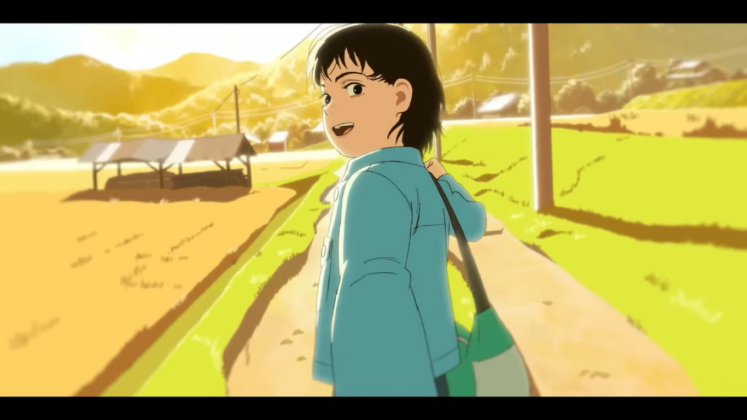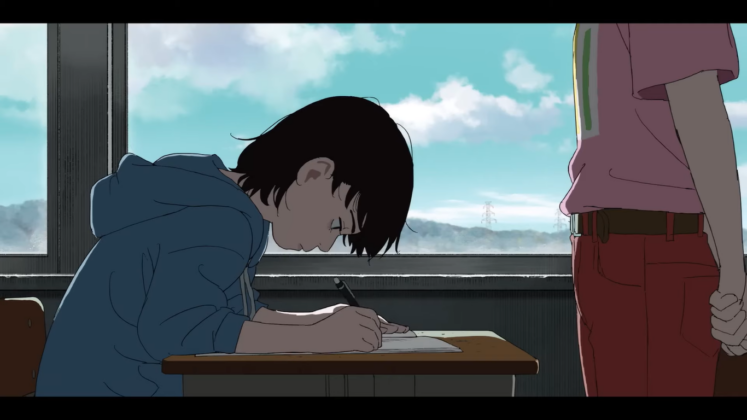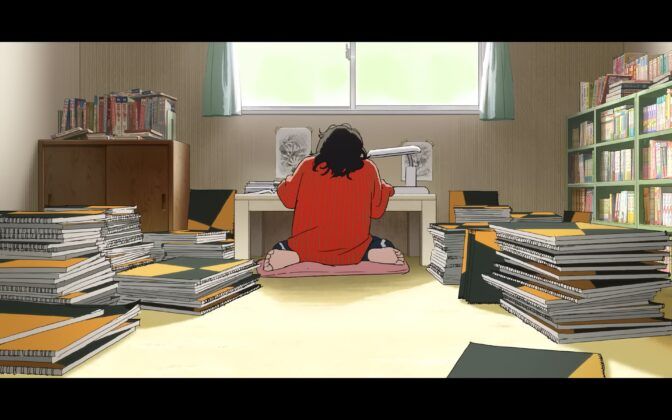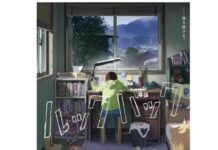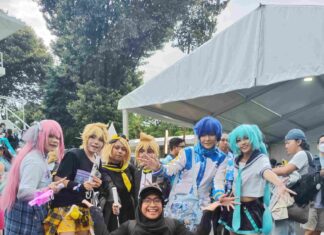To be completely honest, while I liked them enough, I’m not that huge of a fan of Tatsuki Fujimoto‘s serialized works such as Fire Punch or Chainsaw Man. They’re always a fun read, but I often have problems with his approach of moving the story at break-neck speeds to the point that I feel like I can barely connect with the characters. His one-shots however, or at least the two that I have read—Look Back and Goodbye, Eri—while still retaining his writing quirks, are stories that feel much more personal than his previous works. I loved both of those one-shots, as reading them provides so much insight into Fujimoto’s mind as a creative while presenting compelling stories at the same time.
Naturally, when Look Back‘s film adaptation directed by Kiyotaka Oshiyama—the director of Flip Flappers—was announced with a teaser trailer of Fujino hunched back, drawing on her desk, her legs going up and down as she tries to come up with ideas for her manga, and drawn with rough lines in the likeness of Tatsuki Fujimoto’s art style, I was beyond excited. Despite being only 30 seconds long, the animation in the teaser is full of life and character and I felt like I couldn’t wait anymore. I wanted the film to come out as soon as possible so I could see the entire thing.
After watching it in theaters, I can say that I’m glad I waited. With only 57 minutes of runtime, Kiyotaka Oshiyama has successfully elevated Look Back into an experience I could never forget. I’d even say that for me personally, it works much better than just reading the manga. It’s mainly due to the touches given by the director: the beautifully drawn backgrounds, characters that feel so incredibly human with their movements, and the amazing score by Haruka Nakamura. They work together perfectly to convey Look Back‘s themes to the audience.
Look Back tells the story of Ayumu Fujino, a fourth grader who draws manga strips in her school’s weekly newspaper. She’s proud of her skills in drawing, with her teachers and classmates often praising her for it, making her the center of attention most of the time. That is until a challenger comes her way: Kyomoto, a student who never attends school, suddenly participates in making manga strips for the school’s newspaper with her incredible background art. At their graduation, a teacher asks Fujino to go to Kyomoto’s house and to deliver her diploma, which would be the turning point for them to become a renowned mangaka duo at a young age.
Look Back is, ultimately, a story for creatives by creatives. Through its characters, it tries to have a conversation about creating: the burning desire to improve, the countless hours of hunching back in front of a desk, the frustration and admiration when seeing someone who’s better than you, and the feeling of absolute bliss after discovering that something you created has finally reached someone.
Going off on a tangent about myself for a bit, while growing up, art has always been something that interest me. I used to dabble in drawing while I was in elementary and middle school. However, I eventually stopped completely because it felt like I could never improve back then, which is something that I have always regretted until now. Eventually, I took up another form of art during middle school: the art of fiction writing, which I was pretty passionate about back then to the point that I participated in multiple writing competitions. However at some point, it felt like my work was never good enough to get past the preliminary stage of those competitions, and looking at the writing of others my age that’s so much better really discouraged me so… I stopped, again.
That is… until my first year in college, when I started writing again, though in a different form: writing short impressions about the media I consumed or sometimes thinking pieces on a show I really liked. These barely get traction on social media whatsoever, but when a friend that I respected so much as a writer said that they really liked my writing…it was such a boost to my confidence. Discovering that someone enjoys my work has once again lit up my desire to write even more. To get better, to master the art that I love so much. Even maybe, properly picking up fiction writing once again, back to where I started all those years ago.
What I wanted to tell through this story about myself is that… I can see myself in this film through the story of Fujino and Kyomoto. The timing is almost too perfect, because as I was watching Fujino falling in despair after a tragedy, questioning herself on why she draws—why she creates—in the first place, I was made to ask that question to myself too. Tracing back my past, looking back alongside Fujino to rediscover that one thing that moved me forward on this path long ago. It really feels like a ‘look back’ into my past, into everything that led to me becoming who I am now.
That sensation of ‘looking back’ through one’s journey as a creative is reinforced even more by the film’s animation itself; so much so that I’d go as far as saying that the message Look Back (the movie) is trying to tell isn’t just purely Tatsuki Fujimoto’s anymore—it’s also Kiyotaka Oshiyama’s. The man who has a burning passion for his craft that he did most of the key animation for Look Back’s adaptation (according to Tatsuki Fujimoto’s tweets), to the point that he had been working on the film a day before its premiere in Japan. While it is never an ideal circumstance for anime production, it also means that he has so much passion for this project. You can see it in the film: scenes of Fujino and Kyomoto working on their manga, the amount of eraser shavings left on their desks as they worked on them, Fujino’s run that she does during her huge emotional bursts, Fujino and Kyomoto running through a crowd of people during their time in the city, the movement of every single drawing in this movie feels incredibly human with all of its imperfections. Watching it makes me feel warm, in contrast to Fujimoto’s usual colder approach in his manga, and that’s a huge part of why this adaptation works a lot better for me than just reading the manga.
Both composer Haruka Nakamura and sound director Eriko Kimura also worked their magic, making Look Back scenes feel complete. The music works in tandem with the animation to convey the passion, joy, and sorrow in the story. The ending theme Light Song sung by urara also works as the final piece to conclude the story, as the audience contemplates what the story is trying to tell.
True to its message, Look Back‘s movie adaptation is one that’s so full of the passion of the creative minds that have worked on it, and thus serves its purpose as an ode to those with the desire to create, and as a reminder to them as to why they started creating in the first place; giving them a chance to look back.
The Indonesian Anime Times | Review by Alif Naufal Hakim


